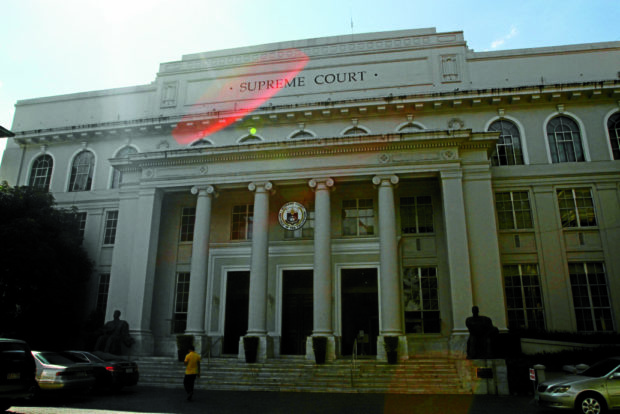
Supreme Court of the Philippines in Manila (File photo by RICHARD A. REYES / Philippine Daily Inquirer)
MANILA, Philippines — Due to the “recent massive infection of personnel,” the Supreme Court has reduced its on-site working capacity and modified its previous work arrangements.
Starting Monday, January 10, work shifts at the Supreme Court shall be divided into three. They will be reporting physically for work from 9 a.m. to 3 p.m.
In a memorandum issued on Friday, Jan. 7 signed by Chief Justice Alexander Gesmundo with approval of the court en banc, one-third of the high court’s total personnel will report physically on Monday and Tuesday, one-third on Wednesday and Thursday, and another one-third on Friday and Saturday.
Those not reporting on any of the three shifts would have to work from home (WFH) for three days to complete the mandated five-day workweek.
The chiefs of offices shall determine who among their personnel shall be included in each shift and may be rotated every week.
“They must not have even the slightest symptoms. They shall be monitored from time to time to ensure that they have no symptoms of COVID-19 infections,” read the memorandum.
Previously, the high court required 50 percent of personnel to work Monday to Wednesday and the other 50 percent on Thursday to Saturday.
Gesmundo said the new work scheme aims “to minimize close physical contact among personnel considering the limited spaces” in the Supreme Court offices.
However, he said, the “reduced working capacity shall not apply to the Office of the Bar Chair and the Office of the Bar Confidant, Office of the Administrative Services, and the Receiving Section of the Judicial Records Office where a greater number of personnel may be required to report on-site.”
Meanwhile, Gesmundo said “the limited personal filing of initiatory pleadings, etc. which was allowed under MO No. 103-2021 dated Nov. 5, 2021, is discontinued until further orders.”
“Hence, all pleadings and other court submissions shall be filed in accordance with the guidelines set forth under Memorandum Order No. 65-2021 dated Aug. 4, 2021,” the chief magistrate said.
The Inter-Agency Task Force for the Management of Emerging Infectious Diseases had allowed the Judiciary, Congress, Office of the Ombudsman, and constitutional commissions to adopt and implement their own alternative work arrangements.